Akhil Pandey Akella
Laying foundations to quantify the "Effort of Reproducibility"
Aug 24, 2023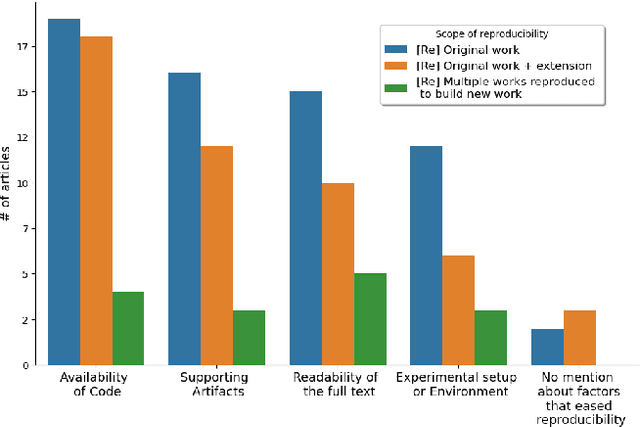
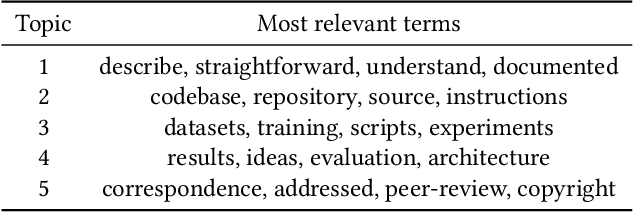
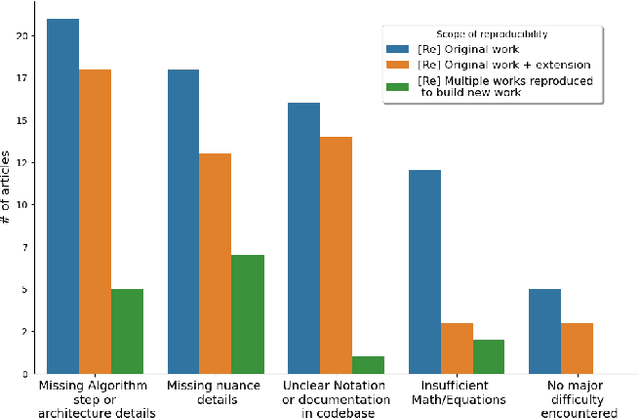
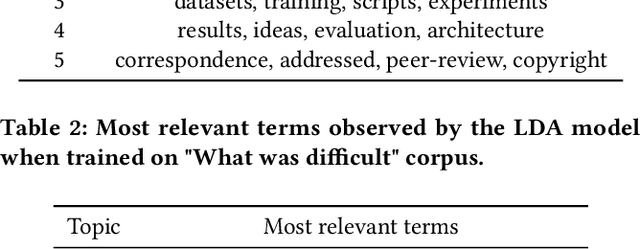
Abstract:Why are some research studies easy to reproduce while others are difficult? Casting doubt on the accuracy of scientific work is not fruitful, especially when an individual researcher cannot reproduce the claims made in the paper. There could be many subjective reasons behind the inability to reproduce a scientific paper. The field of Machine Learning (ML) faces a reproducibility crisis, and surveying a portion of published articles has resulted in a group realization that although sharing code repositories would be appreciable, code bases are not the end all be all for determining the reproducibility of an article. Various parties involved in the publication process have come forward to address the reproducibility crisis and solutions such as badging articles as reproducible, reproducibility checklists at conferences (\textit{NeurIPS, ICML, ICLR, etc.}), and sharing artifacts on \textit{OpenReview} come across as promising solutions to the core problem. The breadth of literature on reproducibility focuses on measures required to avoid ir-reproducibility, and there is not much research into the effort behind reproducing these articles. In this paper, we investigate the factors that contribute to the easiness and difficulty of reproducing previously published studies and report on the foundational framework to quantify effort of reproducibility.
Early Indicators of Scientific Impact: Predicting Citations with Altmetrics
Dec 25, 2020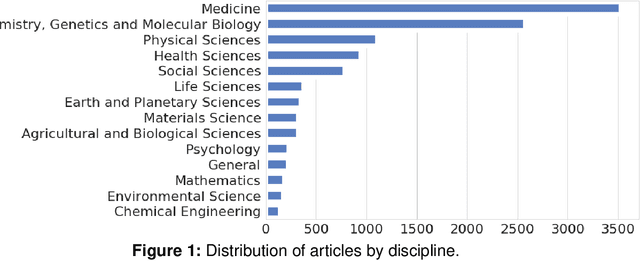
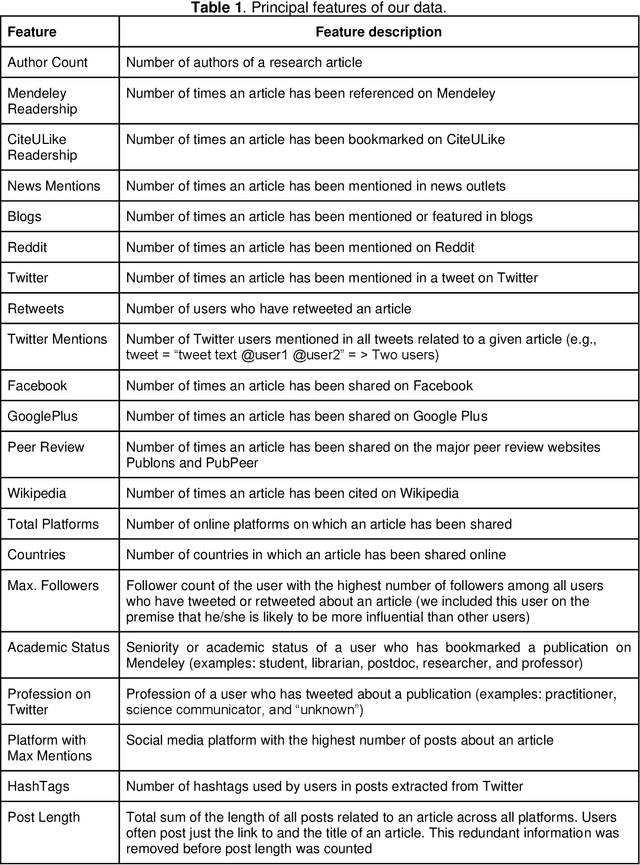
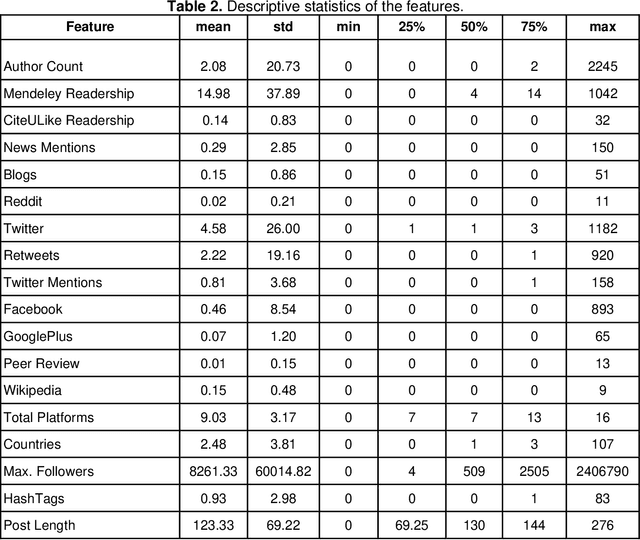
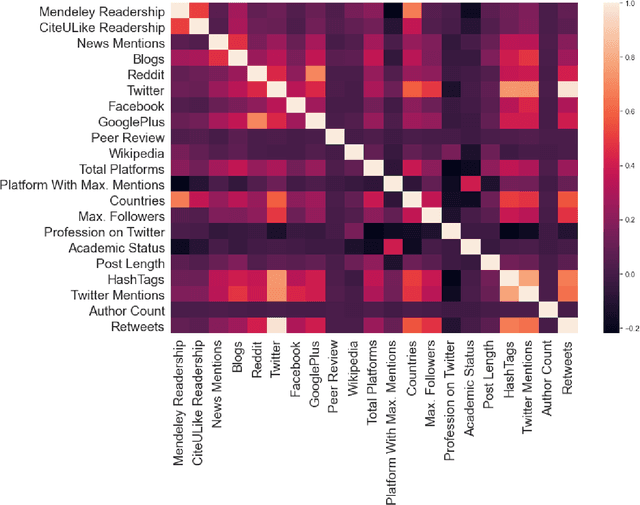
Abstract:Identifying important scholarly literature at an early stage is vital to the academic research community and other stakeholders such as technology companies and government bodies. Due to the sheer amount of research published and the growth of ever-changing interdisciplinary areas, researchers need an efficient way to identify important scholarly work. The number of citations a given research publication has accrued has been used for this purpose, but these take time to occur and longer to accumulate. In this article, we use altmetrics to predict the short-term and long-term citations that a scholarly publication could receive. We build various classification and regression models and evaluate their performance, finding neural networks and ensemble models to perform best for these tasks. We also find that Mendeley readership is the most important factor in predicting the early citations, followed by other factors such as the academic status of the readers (e.g., student, postdoc, professor), followers on Twitter, online post length, author count, and the number of mentions on Twitter, Wikipedia, and across different countries.
 Add to Chrome
Add to Chrome Add to Firefox
Add to Firefox Add to Edge
Add to Edge